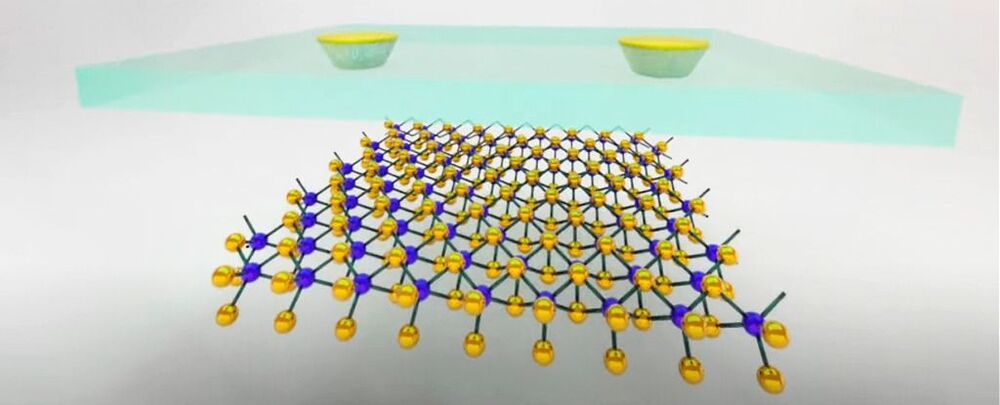A new music creation plug-in uses machine intelligence to compose songs on the fly that match the visual tone and rhythm of creators’ videos.
Get the latest international news and world events from around the world.


ChainSwap Exploited: Projects Using The Bridge Protocol Crashed 99%
Following a second exploit in 9 days, over 14 tokens listed on the ChainSwap bridge have plunged 99%. The company insists: funds from individual wallets are safe.
ChainSwap, a cross-chain asset bridge and application smart chain, has become the latest victim of the increasingly worrying exploits happening in the DeFi ecosystem that has caused the sector to lose hundreds of millions of dollars since the start of the year.
What is ChainSwap?
As a hub for smart chains, the ChainSwap protocol acts as a defi bridge for projects and users to seamlessly move assets between different blockchains like Ethereum (ERC20), Binance Smart Chain (BSC), and Huobi’s ECO Chain.

The argument for a permanent Olympic City
Olympic stadiums can be costly and wasteful. Some have argued for a single, more sustainable, location that can be used year after year.
The summer Olympics have been a quadrennial tradition ever since the late 1800s—when modern sports and rivalries freshened up the ancient tradition. Since COVID-19 crashed the schedule for last years’ events, now the world is gearing up again for another round of competition in Tokyo.
Transporting athletes and fans from all over the world and to cities hosting the Olympic games comes with a gigantic carbon footprint, for example, the 2021 London Olympics had an estimated footprint of over 400 thousand tons of CO2 emissions. Constantly building brand-new stadiums every few years that often go unused after the games, with very few exceptions, is also extremely wasteful. The 2016 Rio Olympics whipped up a whopping 3.6 million tonnes of carbon when including all that went into infrastructure. Eerie listicles of decaying stadiums, including Rio’s, litter the internet with costly examples of the wasted hundreds of millions of dollars worth of labor and materials that go into just one site.
For as long as the games have existed, there have been proponents of having just one Olympic location. King George of Greece gave a speech offering to permanently host the games in the spirit of its origins in 1896, the year of the first modern Olympic games. Some countries, like the United States, agreed, while others, including Pierre de Coubertin who revived the modern Olympics, worried that it would make the games too Hellenistic and that it would hurt the international spirit behind the worldwide event. John Rennie Short, a public policy professor at the University of Maryland, has spoken in the past about the environmental and financial benefits of having the games in a singular location.

NASA is Testing out new Composite Materials for Building Lightweight Solar Sail Supports
Space exploration is driven by technology – sometimes literally in the case of propulsion technologies. Solar sails are one of those propulsion technologies that has been getting a lot of attention lately. They have some obvious advantages, such as not requiring fuel, and their ability to last almost indefinitely. But they have some disadvantages too, not the least of which is how difficult they are to deploy in space. Now, a team from NASA’s Langley Research Center has developed a novel time of composite boom that they believe can help solve that weakness of solar sails, and they have a technology demonstration mission coming up next year to prove it.
The mission, known as the “Advanced Composite Solar Sail System” (ACS3) mission is designed around a 12U CubeSat, which measures in at a tiny 23cm x 23 cm x 34 cm (9 in x 9 in x 13 in). The solar sail it hopes to deploy will come in at almost 200 square meters (527 sq ft), and both it and its composite booms will fit inside the CubeSat enclosure, which is not much larger than a toaster oven.
The booms themselves are made out of a novel composite that is 75% lighter than previous deployable booms, while also suffering from only 1% of the thermal distortion that previous metallic booms were subjected to. They also conveniently roll into a 18 cm diameter spool that can be easily stored and easily deployed once the CubeSat is in space.

5 Sustainable Eating Tips for People Serious About Life Extension
A serving of mushrooms is just 0.08 kg of CO2 emissions—only lentils have a lower per serving CO2 emission level.
One common question J.P. and I get over and over again is about the problem of overpopulation—if human life extension is a humanitarian goal worth pursuing, won’t there be an inevitable environmental crisis? One worse than what we’re already facing?
When we covered the ethics of life extension we partially answered this question based on what we know about population and consumption trends now (tl;dr: we’re more likely to face a crisis of under population than overpopulation). That said, it’s practically impossible to be able to fully forecast environmental trends 50200, and further years into the future. We noted, “Spanners actually need to address it because we will have to continue living through the consequences of climate change if we don’t.”
In other words, if you’re interested in indefinitely extending your own life, sustainable eating should be a priority today because you’ll most likely be alive in the trash-filled, resource-scarce world of tomorrow.


Innovative New Nanotechnology Will Enable “Healthy” Electric Current Production Inside the Human Body
The innovative material that creates green energy through mechanical force.
A new nanotechnology development by an international research team led by Tel Aviv University researchers will make it possible to generate electric currents and voltage within the human body through the activation of various organs (mechanical force). The researchers explain that the development involves a new and very strong biological material, similar to collagen, which is non-toxic and causes no harm to the body’s tissues. The researchers believe that this new nanotechnology has many potential applications in medicine, including harvesting clean energy to operate devices implanted in the body (such as pacemakers) through the body’s natural movements, eliminating the need for batteries.
The study was led by Prof. Ehud Gazit of the Shmunis School of Biomedicine and Cancer Research at the Wise Faculty of Life Sciences, the Department of Materials Science and Engineering at the Fleischman Faculty of Engineering, and the Center for Nanoscience and Nanotechnology, along with his lab team, Dr. Santu Bera and Dr. Wei Ji.

For The First Time, Scientists Have Connected a Superconductor to a Semiconductor
Scientists have succeeded in combining two exciting material types together for the very first time: an ultrathin semiconductor just a single atom thick; and a superconductor, capable of conducting electricity with zero resistance.
Both these materials have unusual and fascinating properties, and by putting them together through a delicate lab fabrication process, the team behind the research is hoping to open up all kinds of new applications in classical and quantum physics.
Semiconductors are key to the electrical gadgets that dominate our lives, from TVs to phones. What makes them so useful as opposed to regular metals is their electrical conductivity can be adjusted by applying a voltage to them (among other methods), making it easy to switch a current flow on and off.

Elon Musk unveils SpaceX’s newest drone ship for rocket landings at sea
Meet ‘A Shortfall of Gravitas.’
The drone fleet used by SpaceX to catch falling rockets now has a third autonomous ship, whimsically called “A Shortfall of Gravitas.”
Founder Elon Musk unveiled the newest floating rocket landing pad on Twitter Friday (July 9) along with a dramatic video from a flying drone circling the ship.